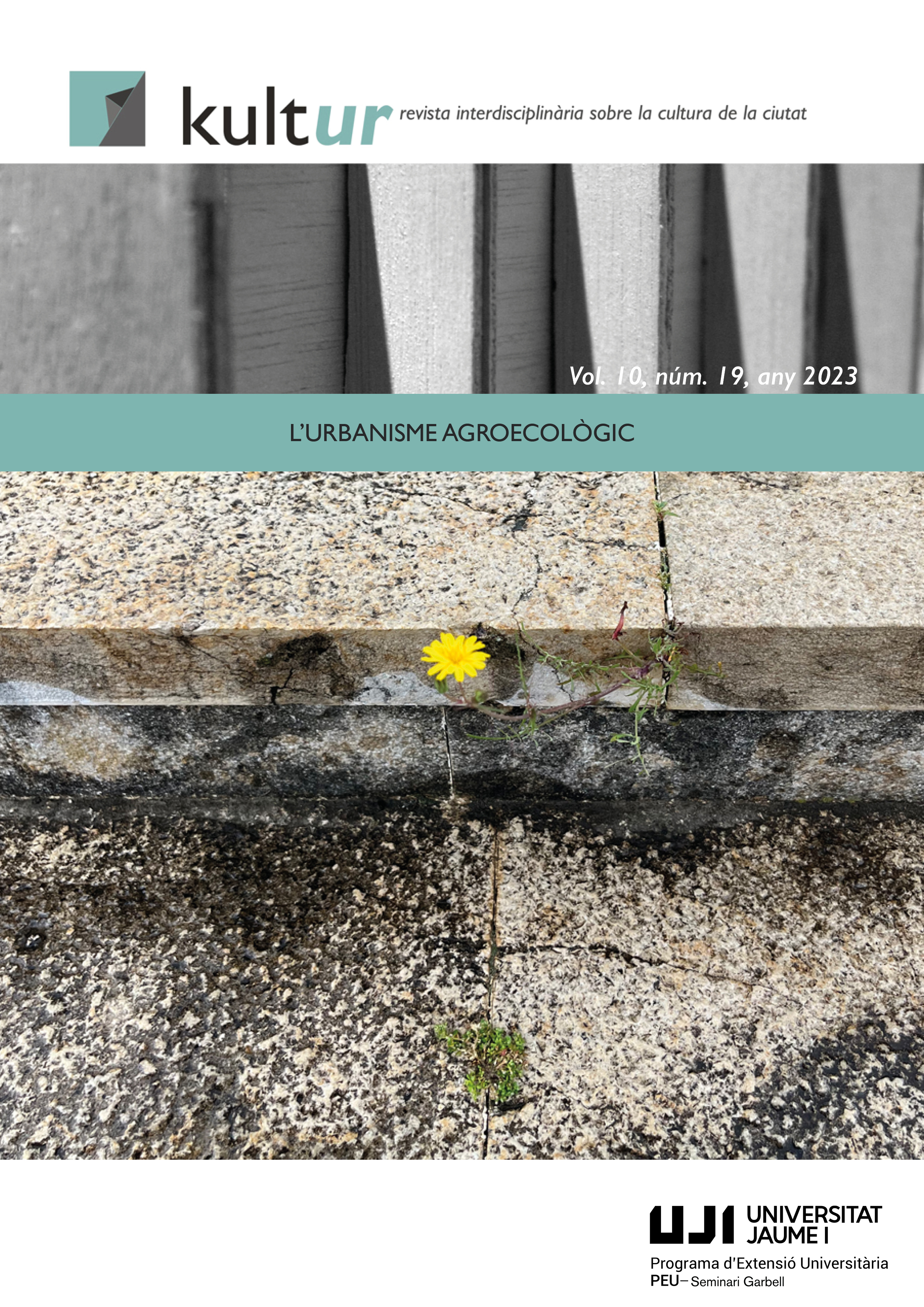Proposición de una tipología híbrida de paisaje
Main Article Content
Abstract
The postmodern panorama with a perpetual timelessness, where disorientation and boredom prevail with respect to the evolution of cities. A broader look at time is exposed. Likewise, art constitutes an outstanding tool to show human narratives that allow configuring and giving identity to places. Another prevailing trend is the review of disused elements, historical residues, which can offer alternatives to give new meaning to spaces. The societies of the 21st century pose an ideological change, where social ties and particular histories with the place take center stage, to the detriment of a global model. On the other hand, the expansion of cities has led to the occupation of rural areas. Given these circumstances, a hybridization of the landscape is analyzed as an option, that is, in balance between the urban and the rural, since it can provide many benefits for the quality of life in metropolitan networks. At the same time, the production of the cultivation areas near the city is defended, since this type of activity contains a large amount of valuable information about the qualities of the place.
Downloads
Article Details
All the contents of kult-ur journal are distributed under the Creative Commons Attribution-ShareAlike 4.0 International (CC BY-SA 4.0), unless otherwise indicated. Click to see basic information and the legal text of the license. The indication of this license CC BY-SA 4.0 must be expressly stated in this way when necessary.
References
Bourriaud, N. (2008). Heterocronias: tiempo, arte y arqueologías del presente. Cendeac.
Corbera, M. (2016). El paisaje, su patrimonialización y el beneficio económico. Investigaciones Geográficas, 65. https://doi.org/10.14198/INGEO2016.65.01
Gilles, C. (2018). Manifiesto del Tercer paisaje. Editorial Gustavo Gili.
Iranzo, E., Antequera, M. y Hermosilla, J. (2010). Identificación, evaluación y puesta en valor de un patrimonio hidráulico singular: las galerías drenantes de la cuenca del Júcar. Investigaciones Geográficas, 53, 125–143. https://doi.org/10.14198/INGEO2010.53.06
Maderuelo, J., Arribas, D. y Centro de Arte y Naturaleza. (2010). Paisaje y patrimonio. Madrid: Abada: CDAN.
Maderuelo, J., Bürgi, P. y Centro de Arte y Naturaleza. (2007). Paisaje y arte. Madrid: Abada: CDAN.
Maderuelo, J., Marchán, S. y Centro de Arte y Naturaleza. (2006). Paisaje y pensamiento. Abada: CDAN.
Monclús, F. J. y Díez, C. (2018). Ciudad y formas urbanas: perspectivas transversales. Volumen 3, Formas urbanas y regeneración urbana. Prensas de la Universidad de Zaragoza.
Nogué, J. (2007). La construcción social del paisaje. Biblioteca Nueva.
Nogué, J. (2008). El paisaje en la cultura contemporánea. Biblioteca Nueva.
Nogué, J. (2010). Paisatge, territori i societat civil. Tres i Quatre.
Ocampo, P., Bru, E., Lagos, D. y Universidad de Santiago de Chile Escuela de Arquitectura. (2002). Periferia: la heterotopía del no-lugar = Peripherie: l’heterotopie du non-lieu. Universidad de Santiago de Chile.
Rosell, Q. (2001). Después de afterwards: [rehacer paisajes = remaking landscapes]. Gustavo Gili.



.png)